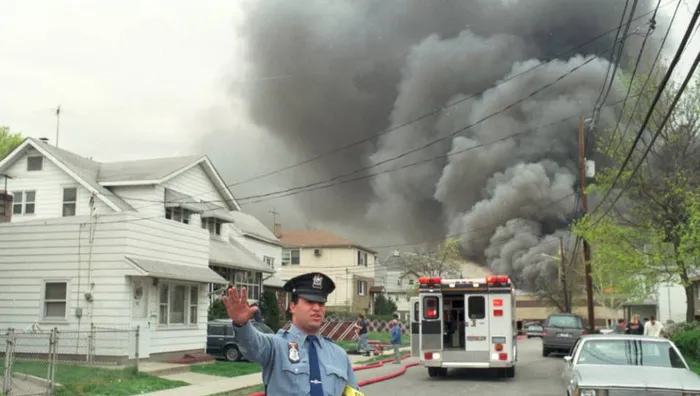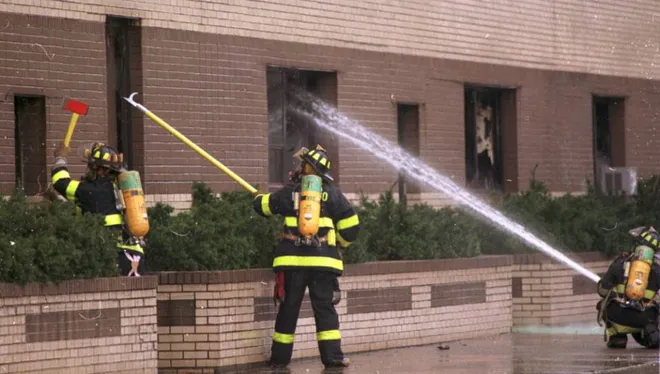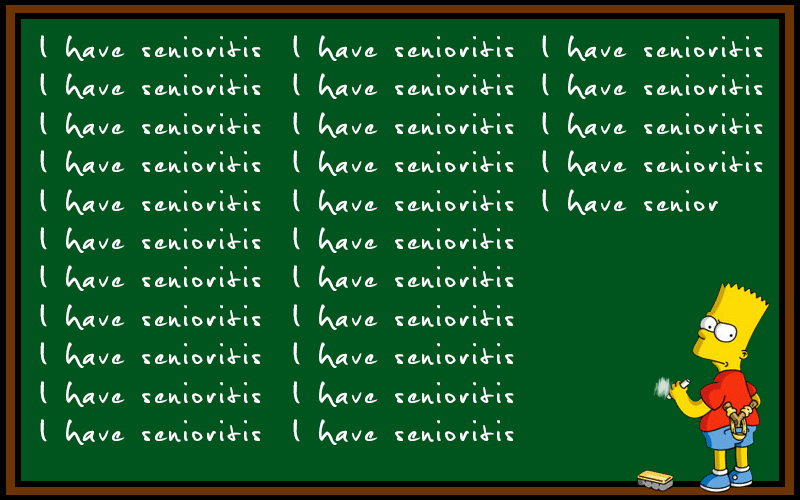On the early morning of April 21st, 1995, a violent explosion rocked the downtown area of Lodi. Local townspeople rushed outside to see the commotion, and, to their surprise, saw a great plume of smoke rising into the morning air. The blast occurred on Main Street at the NAPP Technologies Pharmaceutical plant, killing five employees and severely wounding many others. The explosion and subsequent fire caused a massive environmental disaster and would spark changes in building construction, occupational safety, and environmental protection. However, whilst this event sent chills down the spines of the people of lower Bergen County, it has largely been forgotten. Nearly 30 years later, our town is still picking up the pieces that this tragedy left behind, while still carrying on the legacy.The Day of the Incident
It was 7:45 in the morning when the explosion happened, and soon after, responders were on the scene to combat the ever-growing blaze engulfing the facility and evacuate anyone who may have been injured, as well as those from surrounding homes. It was apparent that this was bigger than anyone had predicted and shortly thereafter, responders from over 30 different organizations and 900 emergency personnel would flood the town to lend a hand in the incident. It wasn’t just Lodi Fire, Police, or EMS either, nor was it other municipal resources, but instead it was a combination of local, state and federal agencies. The EPA, OSHA, FBI, NJ Department of Environmental Protection, NJ State Police OEM, Bergen and Passaic County Health Departments, Bergen County Prosecutor’s Office, the Arson Squad and many more pooled together in order to stabilize the situation. This wasn’t for just any reason either. Apart from the fire and the recovery of those that sadly perished, there were two other main concerns. One, Is this a Terrorist Attack? And two, what are the environmental impacts of it?
The first question was mostly brought about by the fact that just two days prior, the Alfred P. Murrah Federal Building in Oklahoma City had just been bombed, but thankfully, federal agents were quick to dismiss any foul play. The second question, however, was far more important as the chemical runoff proved to be a challenge to contain and posed a serious threat to human safety. EPA teams began taking air, soil and water samples in order to determine the hazard level. They noticed that the water coming out of the people from the fire department’s suppression efforts was lime green, as was the Saddle River, which ran behind the structure. The fear was this runoff would then go into the Saddle River and into the much larger Passaic River, and whilst it did not make it quite that far, it still would leave a two mile trail of green water and dead fish. The green waste now seeping out of the building also caused numerous exposure problems to emergency responders, including eye and throat irritation along with several other symptoms. Federal and state agencies worked overtime in order to contain this disaster and to ensure local residents didn’t have the same thing happen to them. Thankfully, after 6 long hours, the majority of the fire was extinguished and the threat of the chemical waste died down. The real question is, how did this all happen? 5 men died, several others were injured, the ground was poisoned by chemicals, and the facility was laid in ruin, all because of a string of preventable accidents.
What Actually Happened?
Late in the night on April 19, workers at the plant began preparing to mix numerous chemicals together in a large blender. These chemicals specifically were water-reactive, meaning they would react violently with even the smallest amount of water. The first mistake which triggered this event has to do with the fact that the blender wasin fact wet, meaning the chemicals would react. As they continued throughout the night, several attempts were made to add liquid benzaldehyde into the mixture, but all attempts kept failing. The workers observed on numerous occasions that moisture was being found not just in the blender itself, but also in the liquid feed tank and vacuum line that would pump in the benzaldehyde. The smell of rotten eggs would overpower the factory workers as a clear indication something was going wrong. The nitrogen pressure gauge was puffing white smoke, as well as keeping the vat under pressure for the type of operation, but the crew ignored these warning signs and pressed on. Finally, they opened up the blender and realized a small fire had started as the mixture was coming to a boil. The workers immediately evacuated the building and proceeded to make an attempt at emptying out the blender. However, while this evacuation would ensure most workers would be safe, they did it without notifying local police and fire who would be more equipped to handle a situation if anything were to go wrong. And, after workers filled three barrels worth of material, things did. Three distinct whooshing noises would be heard originating from the blender and a flash, described by an eye witness as “a snake’s tongue” filled the room as it combusted. The material had finally reacted to the water that was ignored by the workers, leading to the blast.
Aftermath
Following the fire, the Governor of New Jersey would come to town and speak alongside the mayor. The Mayor of Lodi at the time, Philip V. Toronto, would speak saying that NAPP Technologies had long been unwelcomed in town due to the numerous concerns that they brought over the years. Additionally, the Governor, Christine Whitman, will also speak addressing the building of the facility itself, claiming that this tragedy could’ve been so much worse given it’s location. NAPP sat in the middle of a residential neighborhood and in a bustling area of town. Had the blast been bigger, the death count could’ve been much higher. As a result, the way zoning codes are written was changed in order to ensure a plant wouldn’t be smack down in the middle of a residential area. OSHA and the EPA will also both conduct investigations into how the event happened and what damage it did to the surrounding area. NAPP was heavily criticized for their actions over the years and the events leading up to the blast. It was clear that the proper safety measures had been ignored and the environment and town suffered from it.
The lot that the large facility sat on would remain empty for many years as the ground had become so saturated with chemicals it proved to be unable to have construction put down. However, many may now know about the LA Fitness, CVS and ShopRite that sit on Main Street without even knowing that NAPP used to sit there. It just goes to show that from the ashes, the town will rebuild. What may have been a tragedy now is an economic opportunity to help Lodi flourish. As for the scope of the health and environmental impacts, we truly may never know. The chemicals used by the company were highly toxic as were exposed to many, but the truth remains that we still feel the effects of April 21st 1995. The incident remains an important piece of the town’s history and changed the lives of many local residents, and it should be remembered for years to come.







